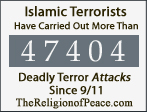 |
| Thousands of Hefazat-e-Islam followers gather at Noagaon village of Shalla upazila in Sunamganj to vandalize the houses of Hindu community on March 17 Dhaka Tribune |
Tribune Report, Published at 09:22 pm October 18th, 2021
3,721 houses, trading centres, temples vandalized in nine years
Attacks on religious minorities in Bangladesh in the last nine years have left a brutal mark on them, as per a recent report.
According to the prominent rights group, Ain o Salish Kendra (ASK), as many as 3,721 attacks took place on the Hindu community — averaging 413 per year — between January 2013 and September this year.
At least 1,678 cases of vandalism and arson attacks on Hindu temples, idols and places of worship were also reported in the same period, according to the report published online.
Besides, 18 Hindu families came under attack in the last three years.
However, when the statistics showed that the situation was improving, 2021 has so far been the deadliest year in the last five years.
The rights activists however said that the number did not represent the real situation as the media covers only the bigger picture that comes to light. They suspect that it would result in creating mistrust among the society and inter-communal standing.
In the last nine years, the worst situation was in 2014 when 1,201 houses of minorities and set-ups were vandalized or set on fire by the miscreants. 2016 was the last time the national dailies reported more than 300 such acts of vandalism or arson incidents.
According to ASK, some 196 houses, businesses or trading centres and temples, monasteries and statues were vandalized or set on fire till the end of September this year. Some seven people got injured during the same time.
However, this October alone changed that as a rumour about the copy of a Quran being desecrated in Comilla ignited a series of communal attacks across the country, resulting in the deaths of six people.
Bangladesh Hindu Buddhist Christian Unity Council claimed that some 70 people were injured in the attacks while around 130 houses, shops, trading centres or temples were vandalized.
Advocate Rana Das Gupta, general secretary of the unity, in a press briefing on Sunday in Chittagong, also claimed that six people were killed thus far in the attack. Police were yet to confirm how many people had died from the series of attacks.
According to the data from ASK, during the attacks from January 2013 till September 30 this year, centres and temples, monasteries and statues were the main targets. Around 45.11% of the total vandalism or arson attacks were here, while 42.35% of the vandalism took place at the minorities’ houses.
About 11.82% attacks were made on business or trading centres owned by these religious minorities, and 0.72% incidents resulted from grabbing the land of the religious minorities.
Of these, 1,576 houses were vandalized and set on fire. During this time, 440 business or trading centres of Hindus were attacked, vandalized and set on fire. Some 1,678 centres and temples, monasteries and statues were vandalized or set on fire.
At least seven Hindus were killed in 2016, the highest in the nine years, ASK statistics said. Two girls from the minority community also became victims of rape in 2014 as well.
Besides this, Kendriya Seema Vihar or central monastery and the houses of the Buddhists community in Cox’s Bazar’s Ramu upazila were burnt down in a severe attack on September 29, 2012.
More than 250 rare Buddha sculptures were destroyed and looted during the attack. Another 18 monasteries and Buddhist households in Ramu and Ukhiya were attacked and targeted by arson. As these incidents occurred in 2012, they were not reflected in the ASK report.
Scenario much larger
Advocate Rana Das Gupta, general secretary of the unity, said that the statistics provided by ASK is very much possible in the context of the country. In fact, the number is much higher than it is said to be.
The trend of attacking the religious minorities was expected to lessen after Awami League took office in 2008. But that remains a dream, he said with frustration.
He said such incidents inspired the local Hindus families to migrate elsewhere.
During a press briefing in Chittagong, the veteran lawyer stated clearly that as the communal attacks continue they are no longer able to believe the political parties and their leaders.
While replying to a question, he said: “There is no sign of stopping communal attacks in the country. And we don’t have any trust in the political leaders of the country.
“We have seen that, on one side, many of the attackers carried the view aligned with the Pakistani ideology in 1971 and we also saw that many were involved wearing Mujib coat.
For example, attacks were made on behalf of a local club named 'Joy Bangla' under Karnafuli police station, among whom two brothers have recently joined the Awami League from the BNP,” he added.
Human right activists Nur Khan Liton believes that the political culture of accusing each other is the main reason that hinders bringing any solution to the crisis.
In the last 10 to 15 years, no justice has been meted out in such incidents and to stop the communal attacks, justice has to be ensured instead of pointing fingers at the opposition, he said.
Sultana Kamal, chairperson of We Can Alliance, an alliance for preventing oppression on women at home, in a press release, said a culture of impunity and injustice has been there and to prevent it the government has to take stern action.
Source: Dhaka Tribune



























0 Comments